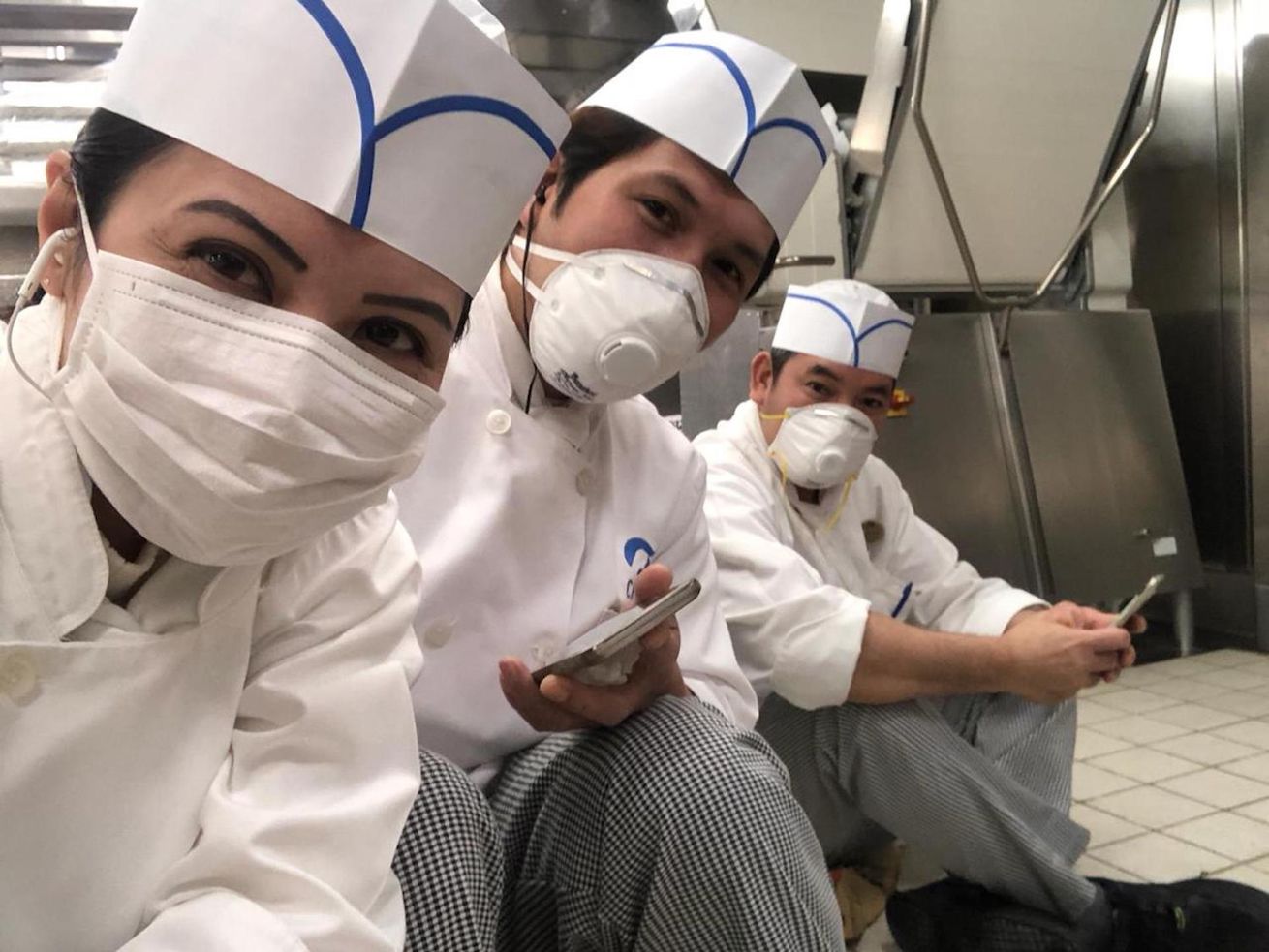
Compelling HBO documentary assembles cell-phone footage into a lockdown story from the early weeks of COVID-19.
If a cruise ship had been quarantined in the early days of a pandemic a generation ago, we’d have only still photographs and perhaps some choppy and grainy videotape recording of events as they played out in real time. But when the Diamond Princess liner was put on quarantine in February of 2020 with some 2,666 passengers and 1,045 crew members aboard, just about everyone had a cell phone handy and recorded untold hours of video — and select footage from a number of those passengers and ship employees is utilized by director Hannah Olson in the compelling if incomplete-feeling documentary “The Last Cruise,” premiering Tuesday on HBO.
Spanning just 40 minutes, “The Last Cruise” opens with title cards explaining the Diamond Princess set sail from Japan on Jan. 20, 2020, when only a few cases of the coronavirus had been reported worldwide. It certainly wasn’t a concern for the passengers and crew of the Diamond Princess, as evidenced by the home video we see at the outset of the story. It’s typical, shaky-cam, amateur footage, with the passengers acting as narrators of their own story as they board the ship, give us a tour of their rooms (some with sunken bathtubs and balconies), and take visuals of various activities. Meanwhile, one crew member gives a P.O.V. angle as he enters his claustrophobia-inducing cabin down below, which has room for just two small beds and two small cabinets, a tiny bathroom — and no window. (You’d just see water anyway.) We also see the intense, frantic world of the kitchen, where thousands of meals are prepared three times a day and one crew member says if you think YOUR job is stressful, take a gig working the kitchen on a cruise ship.
/cdn.vox-cdn.com/uploads/chorus_asset/file/22403916/AFP_1P14ZU.jpg) BEHROUZ MEHRI/AFP via Getty Images)
BEHROUZ MEHRI/AFP via Getty Images)We meet a number of passengers and crew members whose video diaries will be seamlessly edited to tell the story, including:
- Mark and Jerri, an upper-middle-class suburban couple.
- Rebecca and Kent, a younger couple on their 11th cruise.
- Marujna, a pastry chef who makes just enough money to support her two children.
- Dede, a dishwasher from Indonesia with a sunny disposition who is thrilled to have his job.
- Luke, a performer from America.
Their back stories and their early footage are interesting but fairly routine, everyday-life stuff — until the ship’s captain starts making announcements on the P.A. system, first by revealing a passenger on the ship who had traveled for five days on the Diamond Princess before disembarking had tested positive for the virus. The captain tells all passengers with “cold and flu symptoms” to report to the ship’s medical center but adds, “As you can see, ladies and gentlemen, the situation is under control and there are no reasons for concern.”
/cdn.vox-cdn.com/uploads/chorus_asset/file/22403932/the_last_cruise_1.jpg) HBO
HBOAs we quickly learn, that was hardly the case, and our new friends aboard the ship have the video to prove it. After 10 people onboard had tested positive, the captain announced, “It has been confirmed that the ship will remain under quarantine in Yokohama. The length of the quarantine will be at least 14 days.” The reaction from passengers and crew is essentially, Wait, WHAT? Now we’re seeing amateur footage of passengers confined to their rooms, while crew members are still working — preparing meals in close proximity to one another, scrubbing down the ship, going from door to door to inform passengers they’ve tested positive for the virus. Doorway vents are taped shut. Masks are handed out. Signs are posted on cabin doors, identifying positive cases. The first major outbreak of COVID-19 outside China is occurring right there onboard the Diamond Princess, eventually resulting in more than 700 cases and 14 deaths.
We also see a microcosm of worldwide class differences. In the suites, passengers are dealing with an admittedly difficult situation, but they have meals brought to their rooms and they can sit on a balcony and get some fresh air. Crew members are working long hours in unsafe conditions before getting a few hours’ sleep in their tiny, windowless cabins. Eventually some crew take their case to the media, doing interviews and posting viral videos expressing their concerns.
“The Last Cruise” falls short only in being too abrupt. We get far too brief updates on our amateur videographers and how they’re doing, and there’s a noticeable lack of interviews with medical experts or cruise officials. (One can understand why the latter would be reluctant to appear on camera.) Still, director Olson and her team have done an amazing job of weaving together the cell phone footage into a cohesive timeline of a stunning crisis in the nascent days of the pandemic that shook the world.